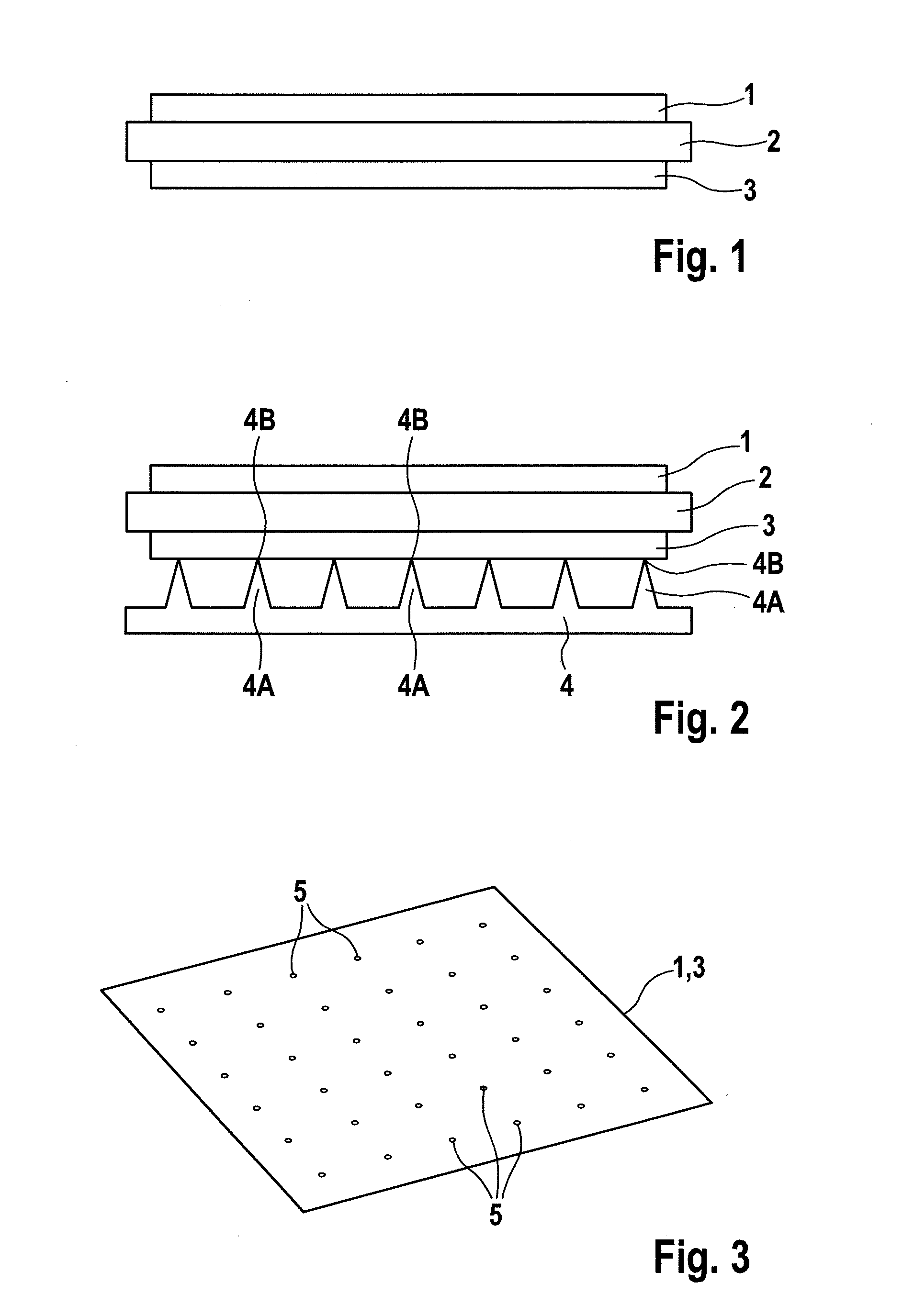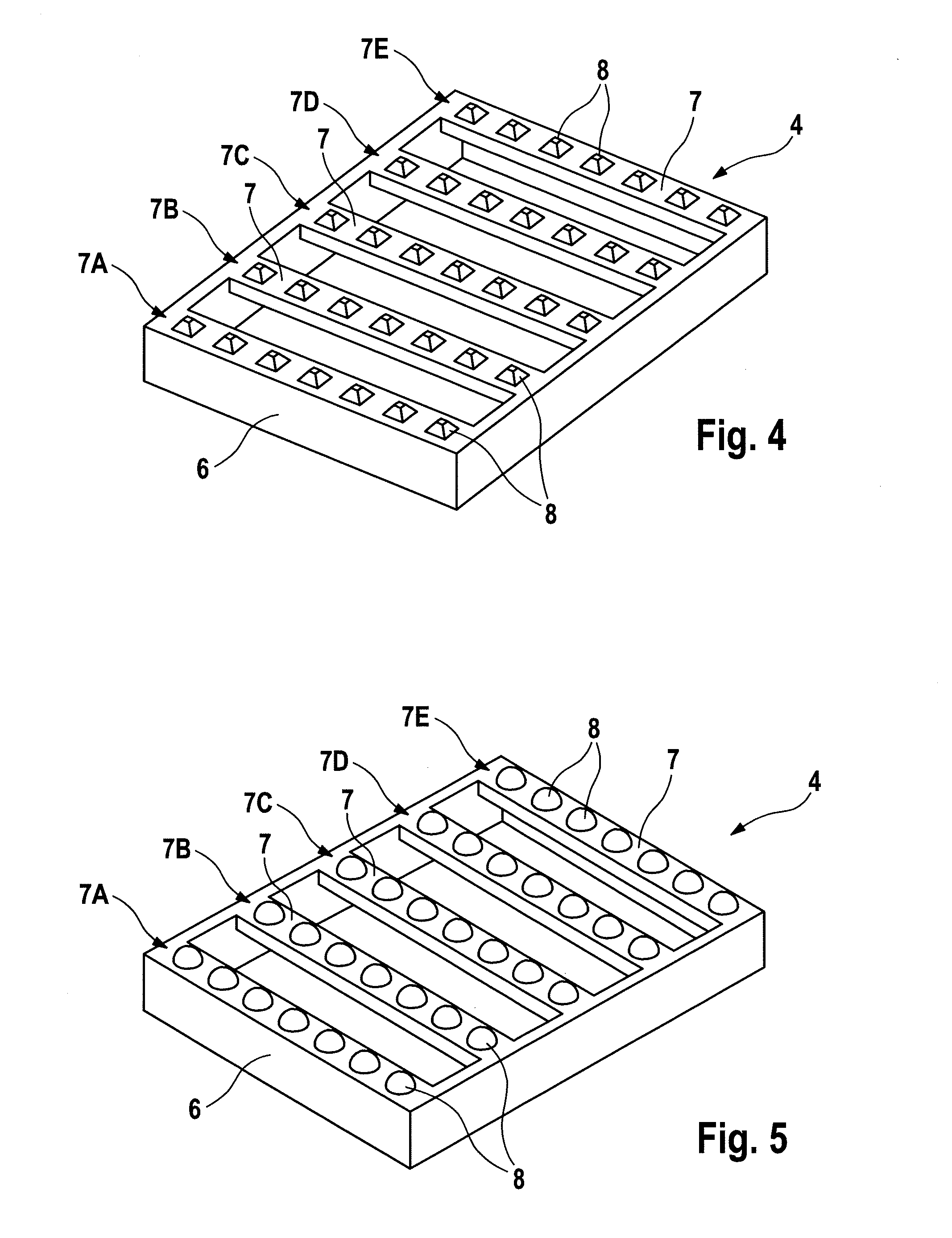Method for the Manufacture of Double-Sided Metallized Ceramic Substrates
a technology of metallized ceramics and substrates, applied in the direction of electrical appliances, domestic applications, applications, etc., can solve the problems of metal plates to the top and underside of ceramics, damage to metal-ceramic substrates, time-consuming and costly, etc., and achieve the effect of simple and economically-implementable methods
- Summary
- Abstract
- Description
- Claims
- Application Information
AI Technical Summary
Benefits of technology
Problems solved by technology
Method used
Image
Examples
Embodiment Construction
[0033]FIG. 1 shows an arrangement, formed as a DCB package, consisting of a first top metal plate 1 and a second bottom metal plate 3, between which is located a ceramic substrate 2. The metal plates 1, 2, are copper plates or foils respectively. The ceramic substrate is an oxide ceramic substrate, in particular an aluminium oxide ceramic.
[0034]The method known as the direct-bonding process, for the bonding of the oxidized metal plates 1 and 3 to the ceramic substrate 2 is described in detail in EP 0085914, to which reference is expressly made.
[0035]The method according to the invention is characterized in that the DCB package is laid on a specially structured carrier 4 (FIG. 2). The carrier 4 is a plate of at least one of the compounds selected from the group consisting of mullite, aluminium nitride, boron nitride, silicon nitride, zirconium nitride, silicon carbide, and graphite. The plate exhibits on the upper side, which faces towards the DCB package 1, 2, 3, a plurality of proj...
PUM
| Property | Measurement | Unit |
|---|---|---|
| Diameter | aaaaa | aaaaa |
| Diameter | aaaaa | aaaaa |
| Diameter | aaaaa | aaaaa |
Abstract
Description
Claims
Application Information
 Login to View More
Login to View More - R&D Engineer
- R&D Manager
- IP Professional
- Industry Leading Data Capabilities
- Powerful AI technology
- Patent DNA Extraction
Browse by: Latest US Patents, China's latest patents, Technical Efficacy Thesaurus, Application Domain, Technology Topic, Popular Technical Reports.
© 2024 PatSnap. All rights reserved.Legal|Privacy policy|Modern Slavery Act Transparency Statement|Sitemap|About US| Contact US: help@patsnap.com










